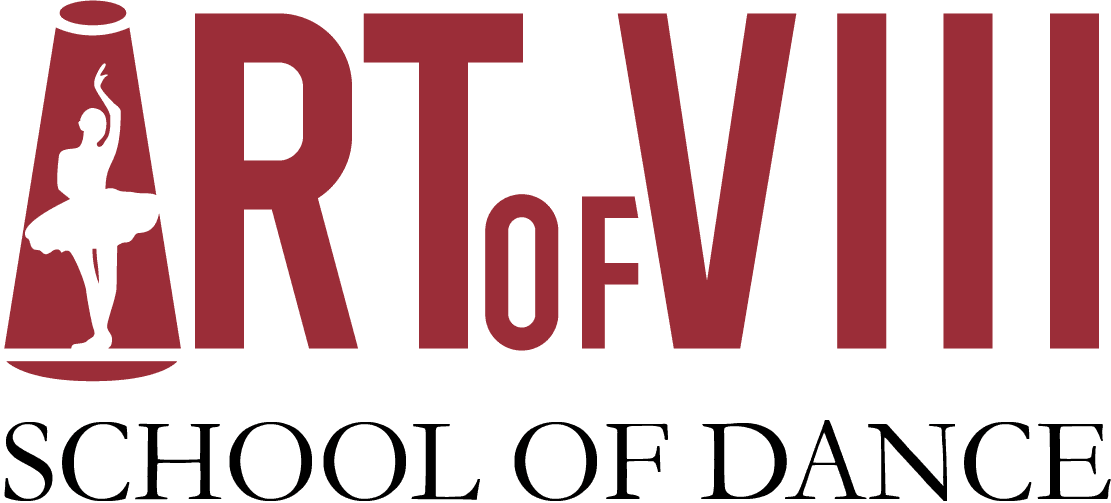From First Position to Performance: Your Journey in Ballet
Ballet dance is a timeless art form that blends grace, strength, and passion. From its rich history to the demanding techniques it requires, ballet offers a unique journey for those who choose to embrace it. Whether you are a beginner just stepping into your first ballet class or an experienced dancer aiming for the stage, understanding the journey from first position to performance is crucial. In this blog post, we’ll explore the stages of learning ballet, essential techniques, the role of ballet schools and classes, and how you can finally bring your hard work to life in a mesmerizing performance.
The Foundations: Understanding Ballet Dance
Ballet dance is a captivating art form that has been enchanting audiences for centuries. Known for its grace, precision, and expressive movement, ballet is the cornerstone of many dance disciplines. But what exactly makes ballet dance so compelling?
Historical Roots
Originating in the Italian Renaissance courts of the 15th century, ballet quickly spread to France and Russia, where it evolved into the classical form we recognize today. This evolution has paved the way for both classical ballet and contemporary ballet techniques that dancers practice worldwide.
Ballet Techniques: The Core Elements
- First Position: The starting point for most ballet moves, requiring turnout from the hips and heels together.
- Plié Exercises: Essential warm-up exercises that enhance flexibility and strength.
- Pirouette Practice Tips: Mastering this spinning move is crucial for balance and elegance.
- Grand Jeté Technique: A leap that showcases a dancer’s athleticism and grace—an aerial display of beauty!
The Role of Flexibility
The importance of flexibility in dance training cannot be overstated. From plié exercises to intricate routines on pointe shoes, each move requires a blend of strength and suppleness. This flexibility ensures dancers can perform with both agility and elegance across varied choreographies.
Ballet’s Lingua Franca
If you ever find yourself confused by terms like “pas de deux” or “arabesque positions,” fear not! The vocabulary of ballet is French due to its strong historical ties to France’s royal courts. Learning these terms is akin to becoming fluent in a language where movement speaks louder than words.
An appreciation of these foundations paves the way for progression from beginner ballet lessons to more advanced levels. Whether you’re just starting your journey or looking to refine your skills, understanding the basics will enrich your experience on stage. Ready to take your first plié? Perhaps it’s time to slip into some comfy attire—check out our stylish options like the elegant ballet long sleeve fitted crew.
Starting Strong: Beginner Ballet Lessons
Ah, the world of ballet! Where dreams take flight on the tips of your toes, literally. If you’re new to the realm of ballet dance, fear not; every prima ballerina started with a plié and a dream. The journey from first position to performance begins with beginner ballet lessons and there’s no better place to start than with a trusted dance studio.
Why Every Great Journey Begins with First Position
- Foundation: Ballet is known for its discipline and precision. Starting with beginner lessons ensures you build a solid foundation.
- Flexibility: Early lessons focus on improving flexibility, vital for executing moves like the grand jeté or arabesque position.
- Confidence: Mastering basic movements boosts confidence, setting you up for future ballet performances.
Ballet classes for beginners often incorporate essential techniques like plié exercises, which are crucial in developing strength and grace. You’ll also be introduced to the ballet barre exercises, where you’ll work on balance and coordination in a supportive environment.
The Importance of Ballet Techniques and Tools
As you embark on your ballet adventure, it’s important to get familiar with not only the steps but also the tools of the trade. Pointe shoes might seem daunting at first glance—more like instruments of medieval torture than elegant footwear—but they become an extension of your body once you’re ready to tackle en pointe dancing. And let’s not forget tutus and costumes that make every twirl feel magical!
A little humor helps too: Consider that even famous ballet dancers had their share of tumbles before becoming legends. Taking beginner lessons is not just about mastering techniques; it’s about embracing the journey itself.
“Embrace each pirouette practice tip as an opportunity to get dizzy in style.”
If you’re eager to start your path in classical or contemporary ballet, why not slip into some comfy attire from our selection? Check out this stylish option—our fabulous Ballet Survivor Short Sleeve T-Shirt.
In summary, beginner ballet lessons lay the groundwork for an extraordinary journey in dance. Remember, every step—whether perfectly executed or delightfully awkward—is a step forward in your dance academy dream. Who knows? Maybe you’ll be one pirouette away from joining professional ballet companies in USA!
The Role of Ballet Schools and Dance Studios
Ballet schools and dance studios serve as the cornerstone for anyone embarking on their journey in ballet. They are not just places where you learn to move your feet; they are the nurturing grounds where raw talent is refined, and dreams take flight—often quite literally in a grand jeté.
Building a Strong Foundation
From mastering the basic ballet techniques to understanding complex choreography, dance studios provide the essential environment to develop your skillset. Whether you’re practicing plié exercises for beginners or tackling the challenging arabesque position in ballet, having trained instructors at your side makes all the difference.
Structured Learning Paths
- Ballet Classes: Tailored programs that guide you from beginner ballet lessons to advanced en pointe dancing.
- Ballet Techniques: Structured classes focusing on everything from ballet barre exercises to pirouette practice tips.
- Pointe Shoes and Beyond: Guidance on transitioning to pointe shoes is crucial, ensuring you’re ready for this significant milestone.
A good dance academy doesn’t just teach steps; it instills discipline, grace, and artistic expression. As noted by renowned choreographer George Balanchine, “Dance is music made visible.” Ballet schools make these visible moments almost magical by providing well-rounded training that includes classical ballet and contemporary ballet forms.
Community and Culture
Beyond skills, dance studios foster a sense of community. The camaraderie built within a corps de ballet or during a pas de deux performance is unparalleled. This cultural exchange enriches students’ understanding of traditional ballet music and famous ballets list, invigorating their passion for dance.
Explore our studio classes today—because every prima ballerina started with a simple plié. And who knows? Your future may hold a spotlight moment with one of the professional ballet companies in USA or even as one of the world-renowned ballerinas today!
The Importance of Flexibility
Let’s face it—ballet isn’t just about looking elegant in tutus and costumes. Flexibility is key. Warm-up exercises for dancers help maintain peak physical condition while preventing injuries. The importance of flexibility in dance training can’t be overstated; it’s as crucial as remembering which leg you lead with during a grand jeté (we’ve all been there).
Advanced Techniques: Beyond Basics
Once you’ve mastered the foundational ballet dance moves, it’s time to leap—quite literally—into the world of advanced techniques. These moves aren’t just about showing off; they’re designed to enhance your strength, flexibility, and grace, ultimately preparing you for the stage.
Pirouette Practice Tips
Pirouettes are a staple in ballet choreography and require precision and balance. A common tip is to find a focal point or “spot” to keep your head aligned as you spin. This helps maintain balance and prevent dizziness. Remember, even prima ballerinas were once wobbly beginners!
The Art of Grand Jeté
The grand jeté is a stunning leap that can steal any show. Here’s a quick technique guide:
- Preparation: Start in plié to gather momentum.
- Launch: Push off strongly with your back leg while stretching your front leg forward.
- Landing: Land softly on the leading foot with bent knees to absorb impact and maintain grace.
The Arabesque Position in Ballet
A hallmark of classical ballet, the arabesque position demands strong core muscles and impeccable posture. For inspiration, consider how professional ballet companies in USA consistently feature this elegant move in their repertoires.
The Challenge of En Pointe Dancing
Dancing en pointe is arguably one of the most challenging feats in ballet—literally lifting you up in the dance world! To succeed, dancers must wear specialized pointe shoes, train rigorously at the barre, and develop immense foot strength.
Ballet techniques like these go beyond mere aesthetics; they combine elements of athleticism and artistry that few other disciplines offer. By committing to advanced training—whether through rigorous class schedules or personalized coaching—you’ll not only refine your skills but also ignite a deeper passion for this timeless art form.
If you’re feeling daunted by these advanced moves, remember that they aren’t conquered overnight. Even famous ballet dancers acknowledge that continuous practice is key. So lace up your pointe shoes, take a deep breath, and let each attempt bring you closer to mastering these complex maneuvers.
The Art of Performance: Choreography and Presentation
Stepping onto the stage can feel like a daunting leap into the unknown or what we in ballet call a grand jeté. However, the true artistry of ballet dance lies not just in executing steps flawlessly but in weaving them into a mesmerizing tapestry through choreography and presentation. Let’s dive into how these elements transform a simple dance into a spellbinding ballet performance.
Understanding Choreography: The Blueprint of Ballet
Just as an architect designs a building, a choreographer crafts the dance, setting each movement to tell a story or evoke emotion. Influential choreographers in the US dance scene today include names like Justin Peck and Christopher Wheeldon who have redefined contemporary ballet with their innovative styles. According to Dance Magazine, 2023 has seen an exciting surge in new choreographic works that blend classical ballet techniques with modern narratives.
- Pas de Deux: This is where two dancers perform together, often showcasing their skills and storytelling abilities through intricate partnering work.
- Lyrical Dance vs Ballet: While both forms emphasize expression, lyrical dance tends to focus more on conveying emotions directly whereas ballet uses structured movements to narrate its stories.
- Ballet Choreography: Each piece is meticulously designed, with every arabesque position and pirouette intentionally placed to enhance the overarching theme.
If you’re looking to master your own choreography skills or simply appreciate them from an audience’s perspective, consider exploring our ballet classes that delve deep into these intricacies.
The Importance of Presentation: Bringing Choreography to Life
Tutus and costumes are not just about aesthetics; they are vital aspects of presenting a ballet performance. These elements help dancers embody their characters fully, making the narrative more believable and engaging for the audience. Remember the iconic tutus from “Swan Lake” or “The Nutcracker”? Each costume piece adds layers to storytelling just as much as traditional ballet music sets the mood.
Your stage presence is equally crucial. The way you hold yourself during en pointe dancing or transition seamlessly between plié exercises for beginners reflects your technical prowess and emotional connection to the piece. Professional ballerinas today stress this dual importance of skillful execution paired with emotive engagement.
“In ballet, technique is only half of what makes a performance memorable; the other half is how you present it,” says Misty Copeland, one of our era’s most celebrated prima ballerinas.
This journey from beginner poses at the barre studio to performing breathtaking routines on stage is what makes learning ballet such an enriching adventure. Whether you’re perfecting your pirouette practice tips or stepping confidently into that coveted prima ballerina role, each step brings you closer to becoming part of this beautiful art form’s legacy.
The Final Bow: Achieving Success On Stage
As the theater lights dim and a hush falls over the audience, your heart races with anticipation. This is the moment you’ve been working towards since your first plié in beginner ballet lessons. With every step and leap, you draw from years of hard work, dedication, and those countless ballet classes where muscle memory was etched into your soul.
Success on stage in ballet dance isn’t just about perfecting a grand jeté or nailing that pirouette. It’s about embodying the story you’re telling through movement. Here are some key elements that contribute to a captivating performance:
- Emotional Connection: Beyond technique, connect emotionally with your character. Audiences remember performances that stir their souls.
- Cohesion with the Corps de Ballet: A synchronized corps enhances the visual harmony of the performance. Remember, teamwork makes the dream work!
- Attention to Detail: Small details like the elegance of an arabesque position in ballet can transform a good performance into a great one.
Did you know? The legendary prima ballerina Anna Pavlova once said, “No one can arrive from being talented alone.” Indeed, it takes persistence and resilience to shine under those spotlights. Consider investing time in additional training such as warm-up exercises for dancers or even honing skills through contemporary ballet workshops for versatility.
If you’re prepping for a big performance, don’t forget to bring along essentials like pointe shoes and perhaps even our stylish ballet mug for some backstage coffee moments!
Your final bow is more than just a routine; it’s an acknowledgment of not only your journey but also of everyone who supported you along the way—your teachers, choreographers, and fellow dancers. So take that bow with pride and remember: every step on stage is another step towards becoming part of ballet history yourself.
Feeling inspired to perform? Discover our wide range of classes at Art of VIII where we turn aspiring dancers into stars.
Check out our studio classes here →
Conclusion: Embracing Your Ballet Passion
As you stand in first position and gaze into the mirror, remember that every ballet dancer from a curious beginner to an aspiring prima ballerina has embarked on this journey with passion lighting their path. Ballet, with all its grace and rigor, is more than just a dance form; it’s a celebration of history, emotion, and resilience.
- The Joy of Progress: From mastering your first plié to executing a flawless grand jeté, each step forward is a victory worth cherishing. As you advance through your ballet classes, you’ll find that the art form offers layers of depth and complexity—each layer revealing new challenges and rewards.
- The Essence of Community: One of the most beautiful aspects of joining a dance studio is the supportive community it fosters. Whether you’re en pointe or perfecting your arabesque, you’re surrounded by peers who understand your struggles and celebrate your triumphs.
- The Importance of Flexibility: Not just physically but also in mindset. Flexibility allows dancers to adapt to various styles like classical or contemporary ballet, ensuring they’re prepared for any stage or choreography.
A little humor goes a long way in this demanding realm: remember that even famous ballet dancers have had their share of tumbles during rehearsals! Yet, what sets them apart is their ability to rise gracefully—both literally and figuratively.
If ever you feel like treating yourself after a tough session at the barre (or maybe just because), consider browsing our collection for something cozy like this stylish ballet long sleeve fitted crew. It’s perfect for those post-rehearsal coffee dates where you can sip from your favorite ballet mug, dreaming about your next big performance.
In embracing ballet, you’re not just learning dance steps; you’re immersing yourself in an art form that continues to inspire across generations. Here’s to every plié, pirouette, and performance that leads you closer to becoming the dancer you’ve always dreamed of being!




